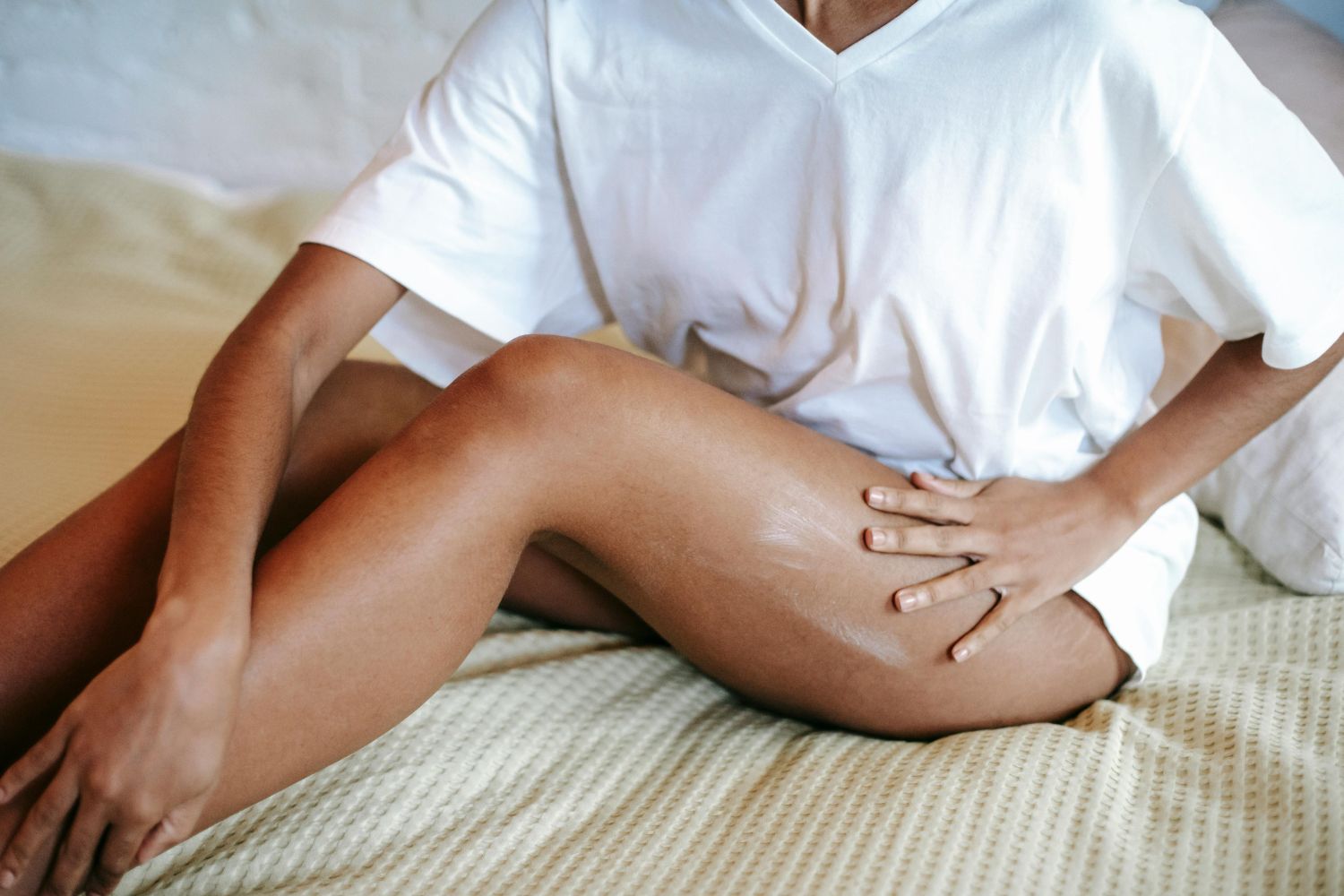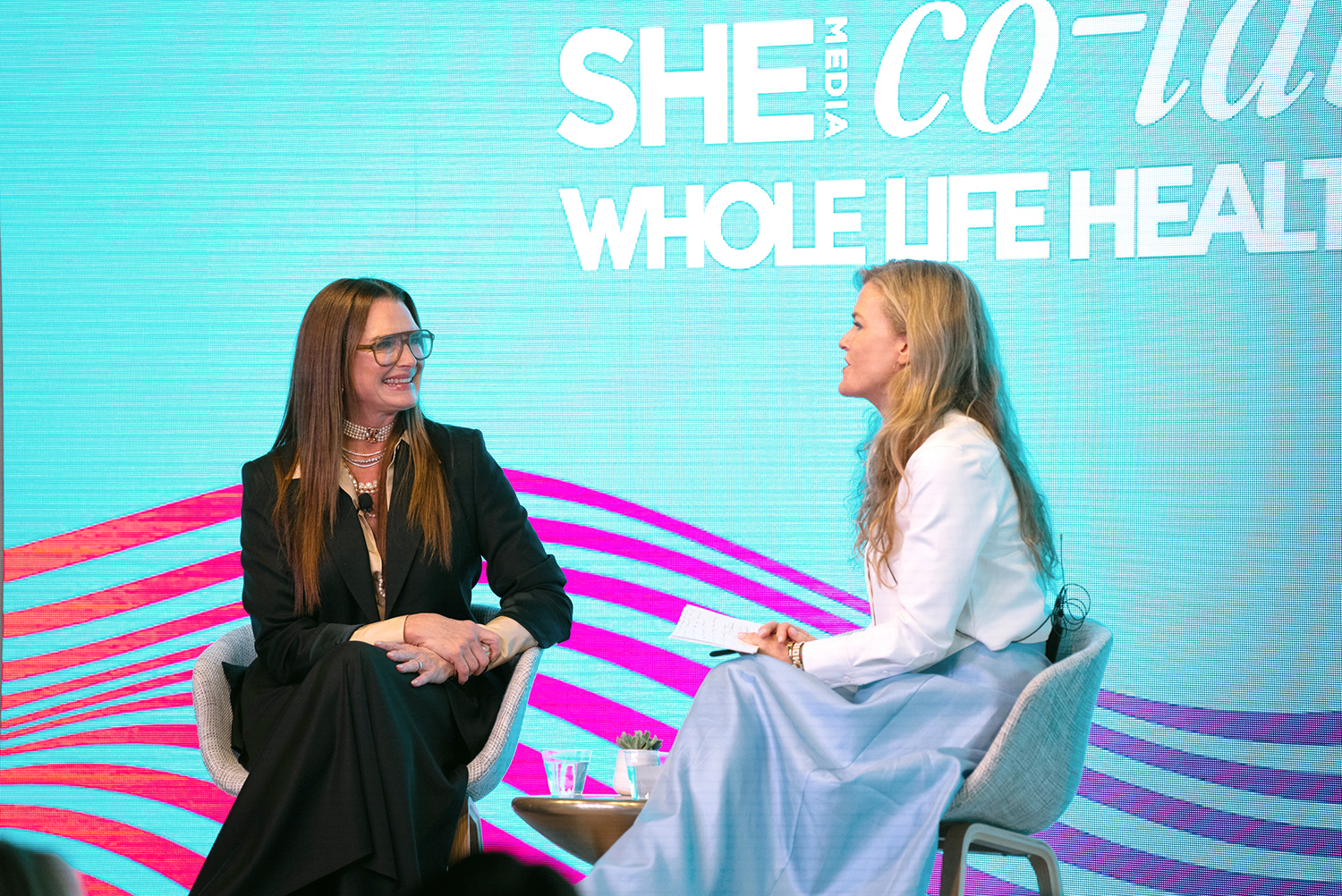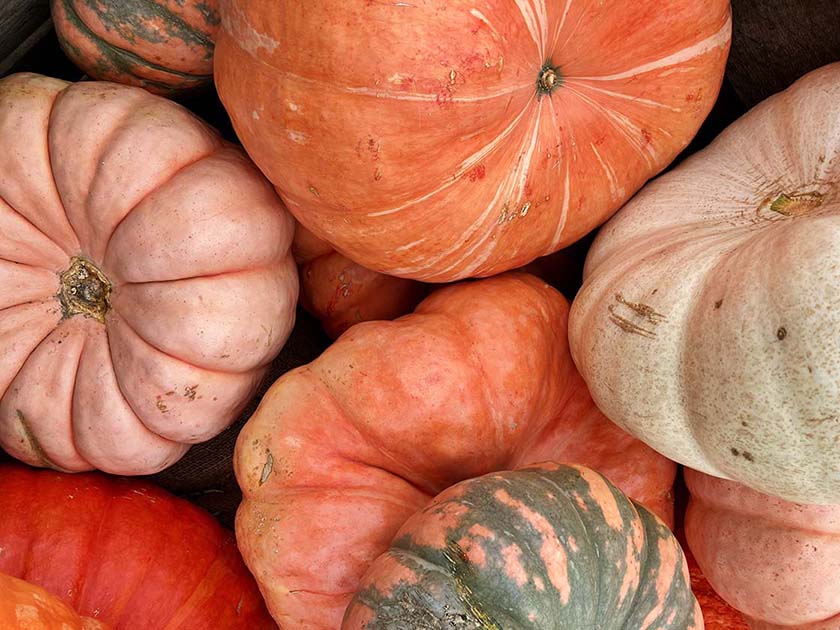
Pumpkins: 8 health benefits and facts about the superfood
I don’t want to brag but I live in Illinois, the largest grower and exporter of pumpkins. In fact, Morton, Illinois, is often called the pumpkin capital of the world because it’s home to Libby’s, a leading producer of canned pumpkin.
If you’re a fan of random and useful facts rolled up into one — or if you’re just on a hunt for what I call pumpkin porn — you’ve come to the right place.
1. Pumpkins are a superfood
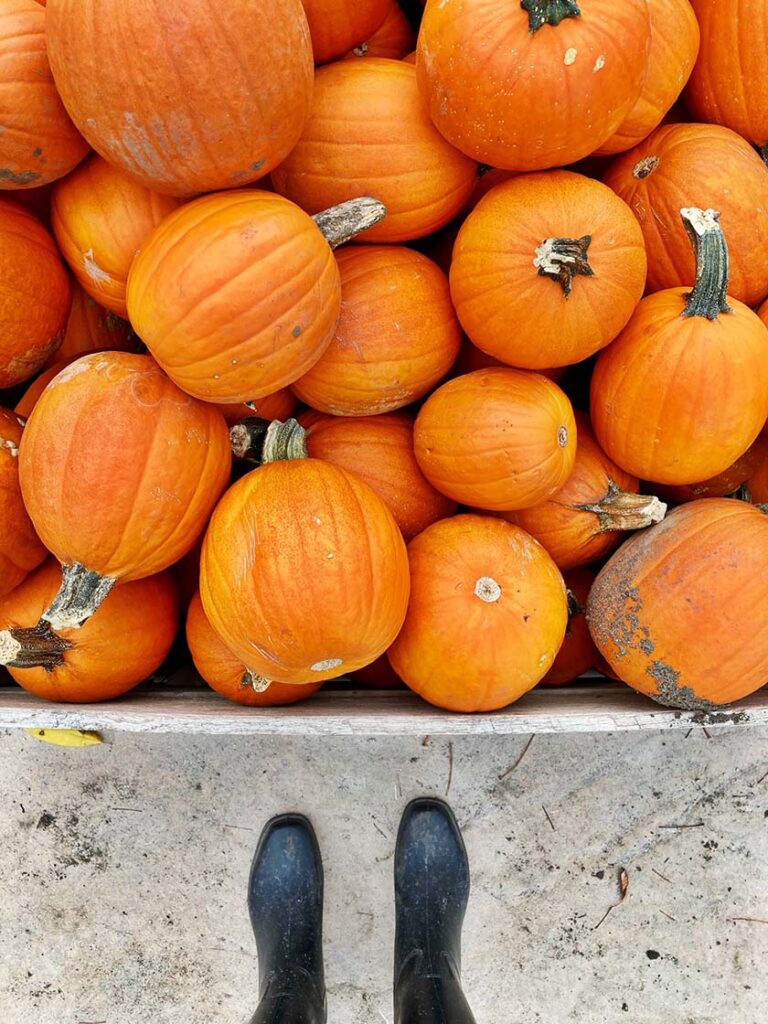
I never thought of pumpkin as a weight management food, but now that I know that pumpkins are low-calorie (less than 50 calories per cup) and fiber-rich, I want to find recipes that don’t call for sugar, like pumpkin soup and healthy pumpkin bread and muffins.
Did you know that every part of pumpkins are edible? You can eat the skin, leaves, flowers, pulp, and even the stem.
2. Talk about high-impact, low-budget health food: One pumpkin produces about 500 seeds
Pumpkin health benefits don’t stop at the fruit. Pumpkin seeds are high in iron and contain amino acids, magnesium, zinc, potassium, and protein. Pumpkin seeds are crispy and delicious roasted — I like baking them with olive oil and sea salt, and at only 18 calories per tablespoon, they’re great for snacking as well as adding to salads.
Don’t have time to roast your own pumpkin seeds? Order a bag of pumpkin seeds here.
3. There are more than 45 varieties of pumpkins
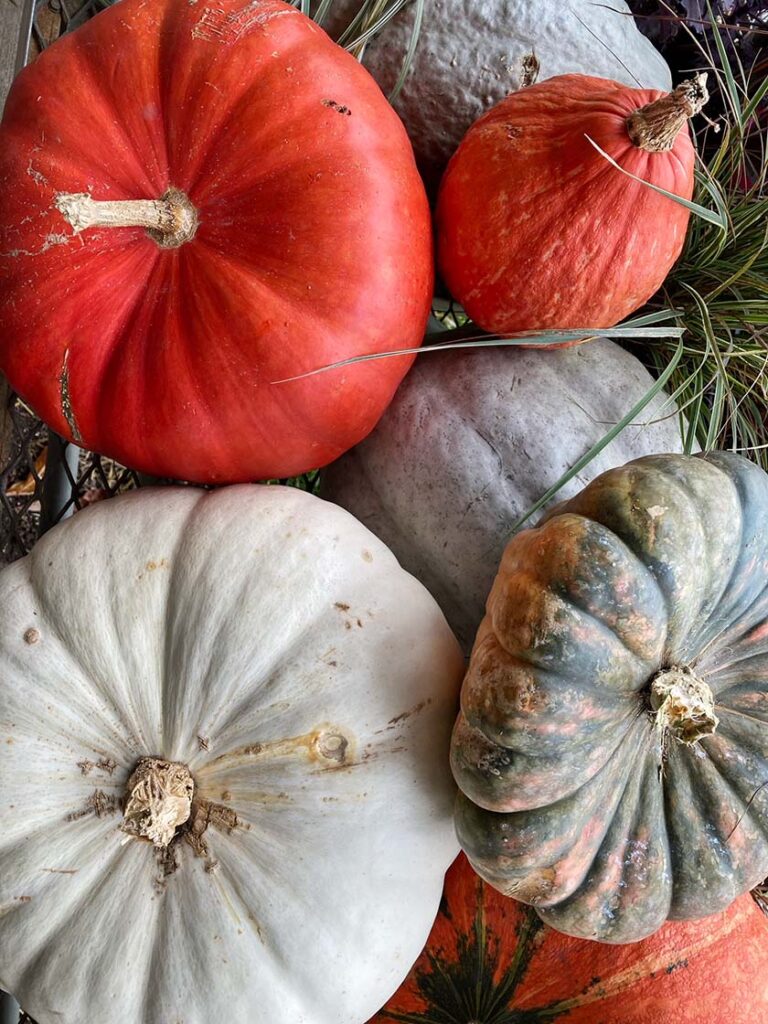
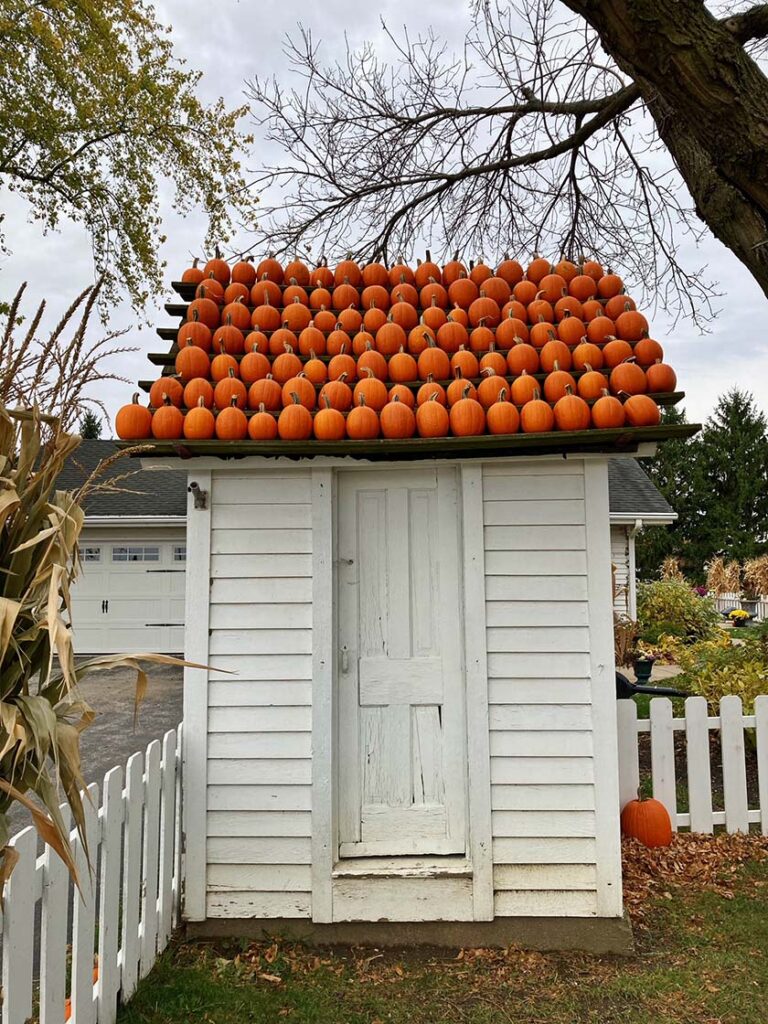
Like this photo? Buy The Pumpkin House art print on Jumble & Flow’s Society 6 shop.
4. White pumpkins are great for decorating, painting, and eating
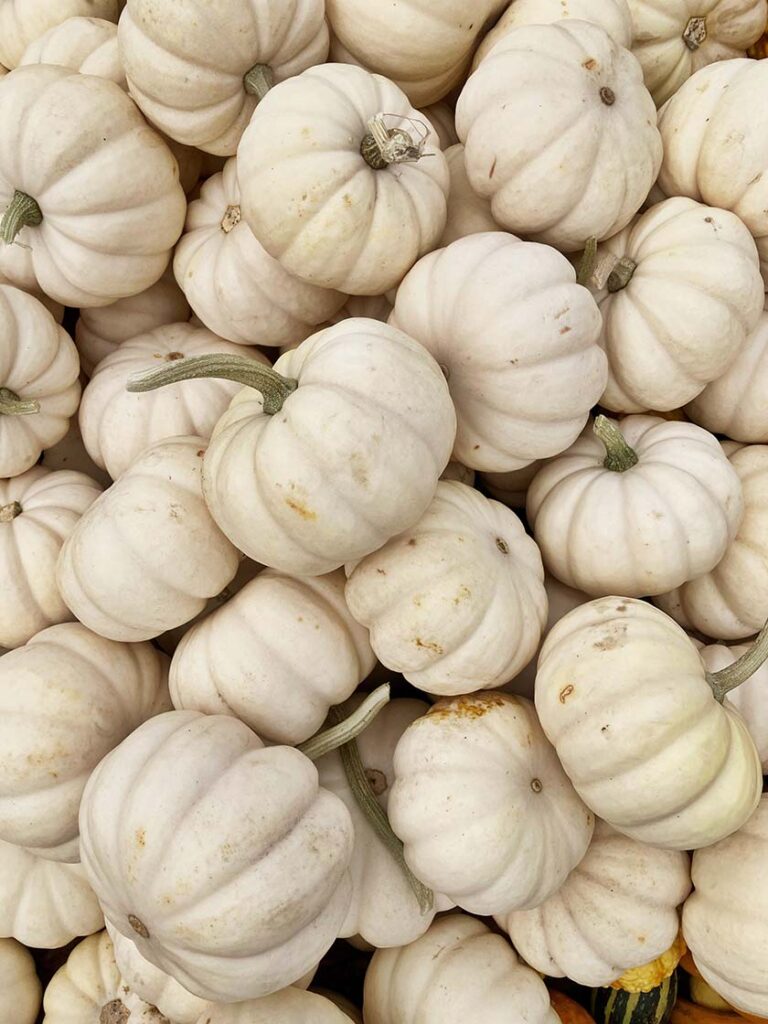
Like this photo? Buy this White Pumpkins art print.
5. Pink pumpkins are real
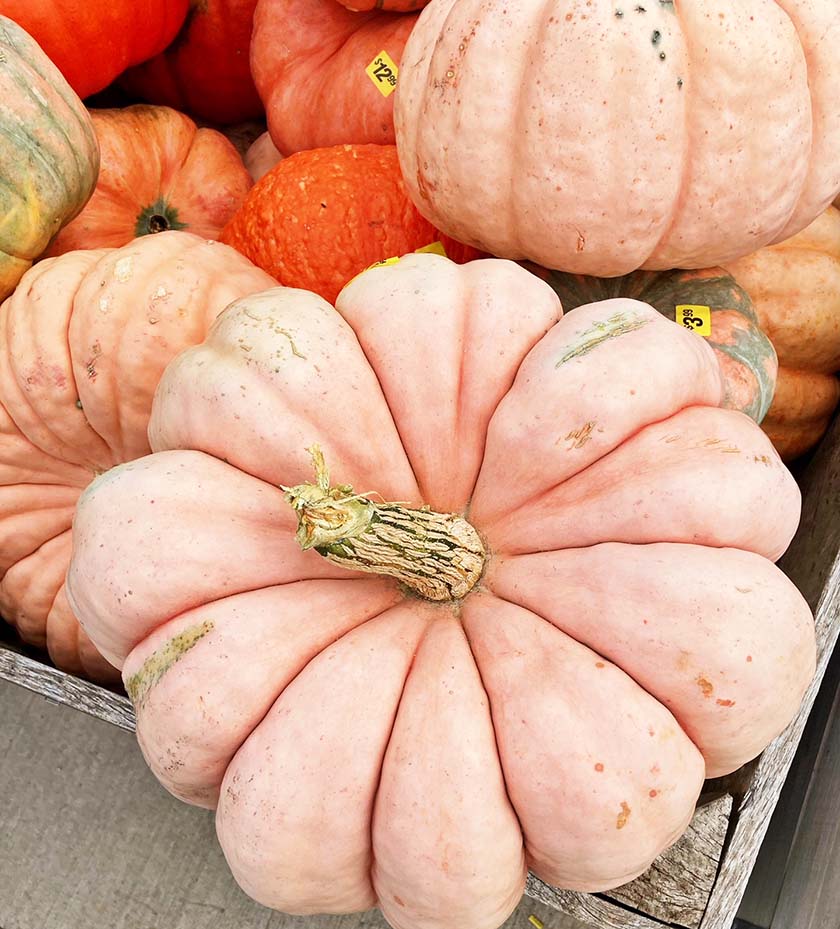
Pink pumpkins are a newer hybrid variety that has light pink to somewhat orangey-pink deeply furrowed skin with a thick stem and deep orange flesh. They’re grown from Porcelain Doll pumpkin seeds. The Porcelain Doll pumpkin is linked to the Pink Pumpkin Foundation, a nonprofit that donates a portion of the profit from each pumpkin sold to support breast cancer research.
6. Pumpkins are not native to North America
Pumpkins originated in Central America and are now grown on every continent except Antarctica.
In early colonial times, pumpkins were used as an ingredient for the crust of pies, not the filling. Colonists sliced off pumpkin tops; removed seeds and filled the insides with milk, spices and honey. This was baked in hot ashes and is the origin of pumpkin pie.
7. Gourds are not pumpkins
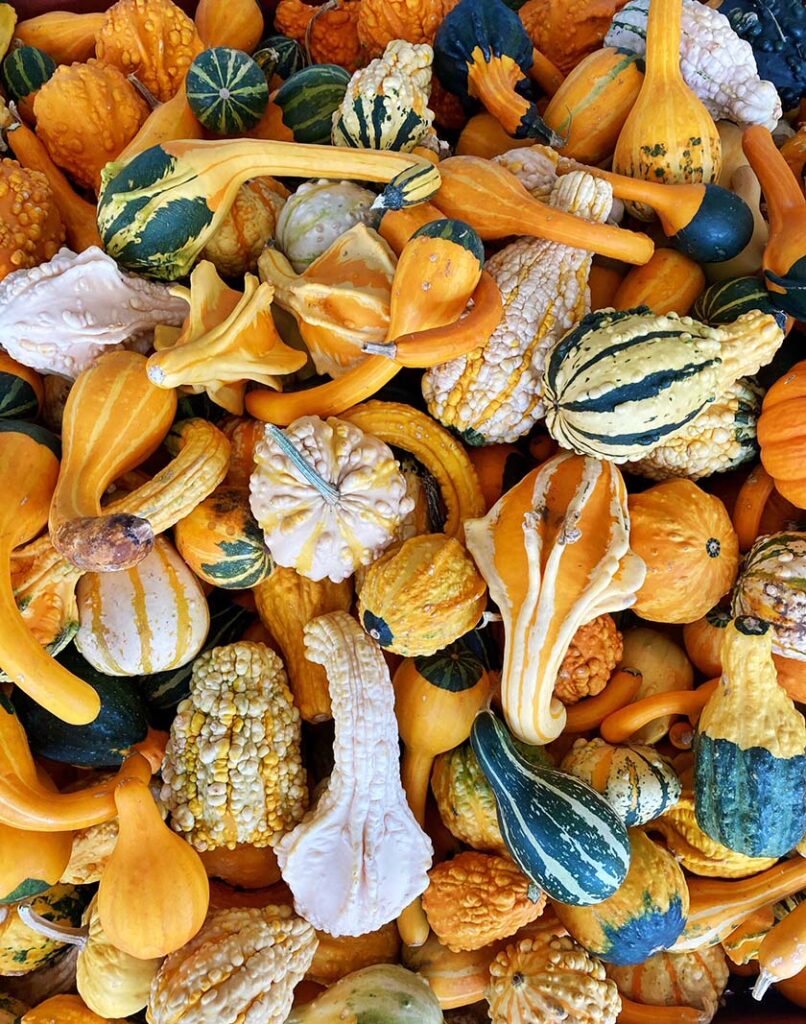
The biggest different between gourds and squashes is that gourds are primarily meant to be decorative, with the exception of some gourds in their immature stages, which may be eaten as vegetables, like a squash.
8. Pumpkins with warts are called knucklehead pumpkins
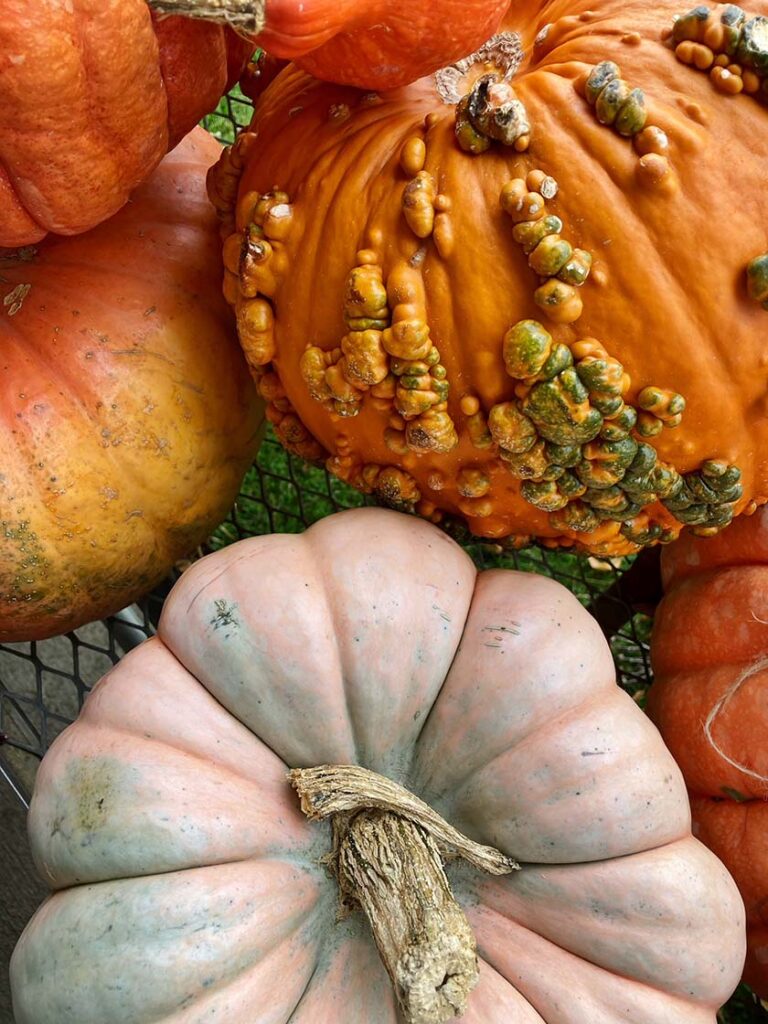
Bumpy pumpkins were created and patented as Knucklehead Pumpkins in 2008 in Holland, Michigan, where I went to high school. 🙂 In case you’re curious, you can eat bumpy pumpkins — when cooked, you’ll get a very sweet and mild flavor.
The Jumble & Flow Pumpkins Photography Collection

View our collection of pumpkin art prints, phone cases, and more on Society 6.

